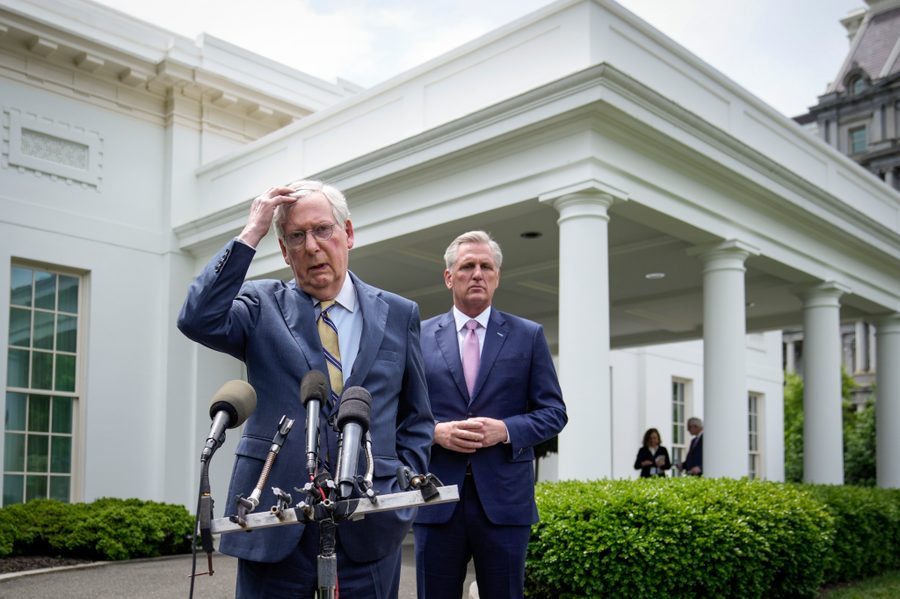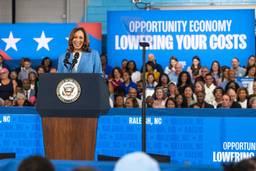The Republican Party’s Plan to Fight Inflation Is a Sham
Republicans don’t have a strategy to lower costs for consumers, but they are plotting to slash the safety net.
Max B. Sawicky

The future of the impending Republican takeover of the House of Representatives is murky. The power struggle between Trump die-hards and apostates is unresolved, its implications uncertain. Electoral results fueling the takeover were due in no small part to the specter of inflation haunting consumers. The proposed responses to this leading concern from the Right will be on the table for debate.
We should note before this expedition that the actual inflation data has been improving since May, and especially over the past two months. Meanwhile, national employment has grown by 800,000 jobs over the past three months, which is not shabby. Sadly, click-baity news stories with photographs of $5.00+ gas in California draw eyeballs and are difficult to put to rest. (If you like to check gas prices, the national average at this writing was $3.25 a gallon.)
At any rate, with gun and camera we commence a hunt for tHe rEpUbLiCaN PlAn tO FiGhT InFlAtIoN. One rendition from Rep. Kevin McCarthy (R-Calif.), angling to be the new Speaker of the House, is here. The Biden response is here. I have read them both, so you don’t have to.
The trick in suggesting a solution to a difficult problem is to garland it with things that sound good or that you have always wanted, but that are not necessarily related to the proclaimed objective. In McCarthy’s plan we have that with a vengeance. On the plus side, this “plan” can be laid out on a single piece of paper, kind of like how Trump as president gave us “Infrastructure Week.” A plan contained in press release format carries little credibility as policy.
Taking the canards one by one, the first is that “energy independence” will reduce the prices of products stemming from oil and gas extraction. This is a long-standing chestnut in the rhetoric of both parties. By the latest data, the United States already exports more oil and gas than it imports, so the good news is that we are already “energy independent.”
Alas, domestic producers’ patriotism does not extend to willfully foregoing profits. Their usual practice is to adhere to the world prices of oil set by the OPEC cartel, led by our friends the Saudis, lately with collusion from Republican idol Vladimir Putin. It wasn’t so long ago that the Trump administration came to their rescue, when oil prices drifted too low. “Independence” has no impact on costs faced by U.S. consumers. Meanwhile, of course, ongoing dependence on petroleum products will doom us all, in the end.
In summary, this element of McCarthy’s plan is fated to inconsequentiality.
Item two is described as “Move the supply chain away from China.” Put aside how this might be done, and consider why the supply chain is ‘there’ in the first place: China is a lower-cost producer. Moving it away from China is more likely to raise prices, not reduce them.
The actual task of “moving” the supply chain, as if it were furniture in the throes of interior redecoration, is another non-sequitur. The supply chain is an enormous, complex web of relationships among a myriad of corporations.
The Biden administration has put its own weight behind moving part of it, in the form of their campaign to resituate the production of computer chips in the United States, which received Republican support in the Senate. This is otherwise known as industrial policy, or if you are irrationally hostile to it, “socialism.” The progressive hope for such a policy is that it could move the composition of U.S. employment towards higher-paying jobs.
Moving the supply chain sounds good, but doing it is a different matter — and touting it as an anti-inflation policy is delusional.
Finally, in the department of Things We Never Liked that we opportunistically classify as inflation-fighting, is the intimations of new assaults on Social Security and Medicare, the crown jewels of the U.S. welfare state. In Republican rhetoric, this takes the form of gripes about government spending and proposals to force frequent votes to take away benefits.
There is an underlying economic idea with a grain — just a grain — of truth: that increases in what economists call aggregate demand due to federal spending push up prices across the board. The problem is that inflation these days is commonly attributed to holes in the supply chain, due first to the pandemic and second to the Russian invasion of Ukraine. The pandemic led to shut-downs of industry, leading to shortages and price spikes engineered by opportunistic corporations. It still does.
The Ukraine invasion and resulting sanctions against Russia disrupted global shipments of grain and oil, basic elements in production of basically everything. One of the virtues of Capitalism with a capital C is that when somebody is taking advantage of shortages and making bank, others will rush in to take advantage. The ultimate impact is for prices to settle down. Unfortunately, for many working people, “ultimate” sometimes takes a painfully long time.
One tip-off to the bad faith underlying Republican claims of fighting inflation by reducing federal spending is their simultaneous goal of cutting taxes, which has the opposite effect. When British Prime Minister-for-a-day Liz Truss proposed this sort of nonsense, she was chased out of office faster than you can say “Senate Majority Leader Mitch McConnell.”
We should not give the Biden White House a pass on this issue. Going to their own riposte, linked above, there is an echo of the Obama nostrum that high federal budget deficits are to blame for everything bad that happens. This line has been used by Biden himself, in previous threats to fix the supposedly fatal deficits by curbing “entitlement spending.” Clips of Biden declaiming on the Senate floor in 1995 attest to the non-threatening nature of budget deficits, since we have somehow survived them for the ensuing 27 years.
In the face of current federal deficits, largely related to the pandemic, we should recall the astonishing recovery of national employment in 2022, which, as noted above, continues. The deficit phobia aligns with the Federal Reserve’s determination to fight inflation by attacking the living standards of the vast majority of the population. The idea is to damp down employment and consumer spending by raising interest rates, discouraging business investment and purchase of consumer durables (including housing). Insofar as inflation originates in supply chain problems, the Fed’s approach is much like the medieval practice of bleeding the sick to drain them of evil humors.
To its credit, the Biden administration has scored points on prescription drug pricing, health insurance premiums, and the industrial policy cited above. Affordable drug prices and insurance can of course be extremely eventful for the directly affected consumers. Their impact on the overall price level — the cost of basics like gas, groceries and rent — is limited. It’s a good talking point. The same holds for making electric vehicles cheaper, if you can afford an EV in the first place.
There have been Republican threats of using the routine need to raise the federal debt ceiling as a lever to cut Social Security and Medicare. At this point it’s hard to gauge the likelihood of this maneuver, something for which we may have Donald Trump to thank. His sabotage of Republican electoral efforts last month may, more than anything else, give pause to possible antics around the debt ceiling that threaten the global stability of the financial system. There is still ballast for Sen. Lindsey Graham’s (R-S.C.) prediction in 2016 that a Trump nomination would destroy the Republican Party.
Max B. Sawicky is an economist and writer in Virginia, formerly with the Government Accountability Office and the Economic Policy Institute. He is a Senior Research Fellow at the Center for Economic and Policy Research and runs the MaxSpeak, You Listen! blog at sawicky.substack.com.








